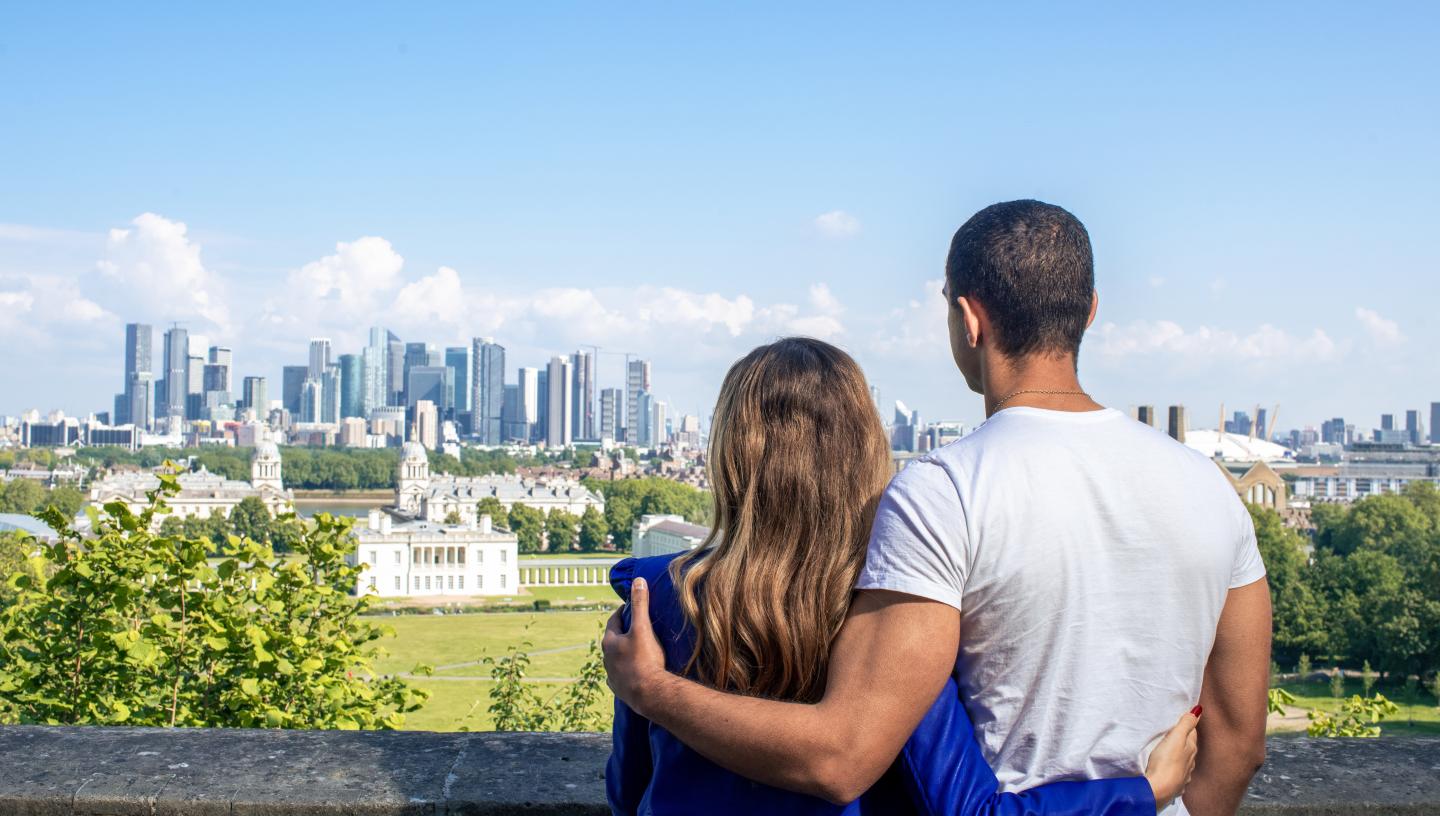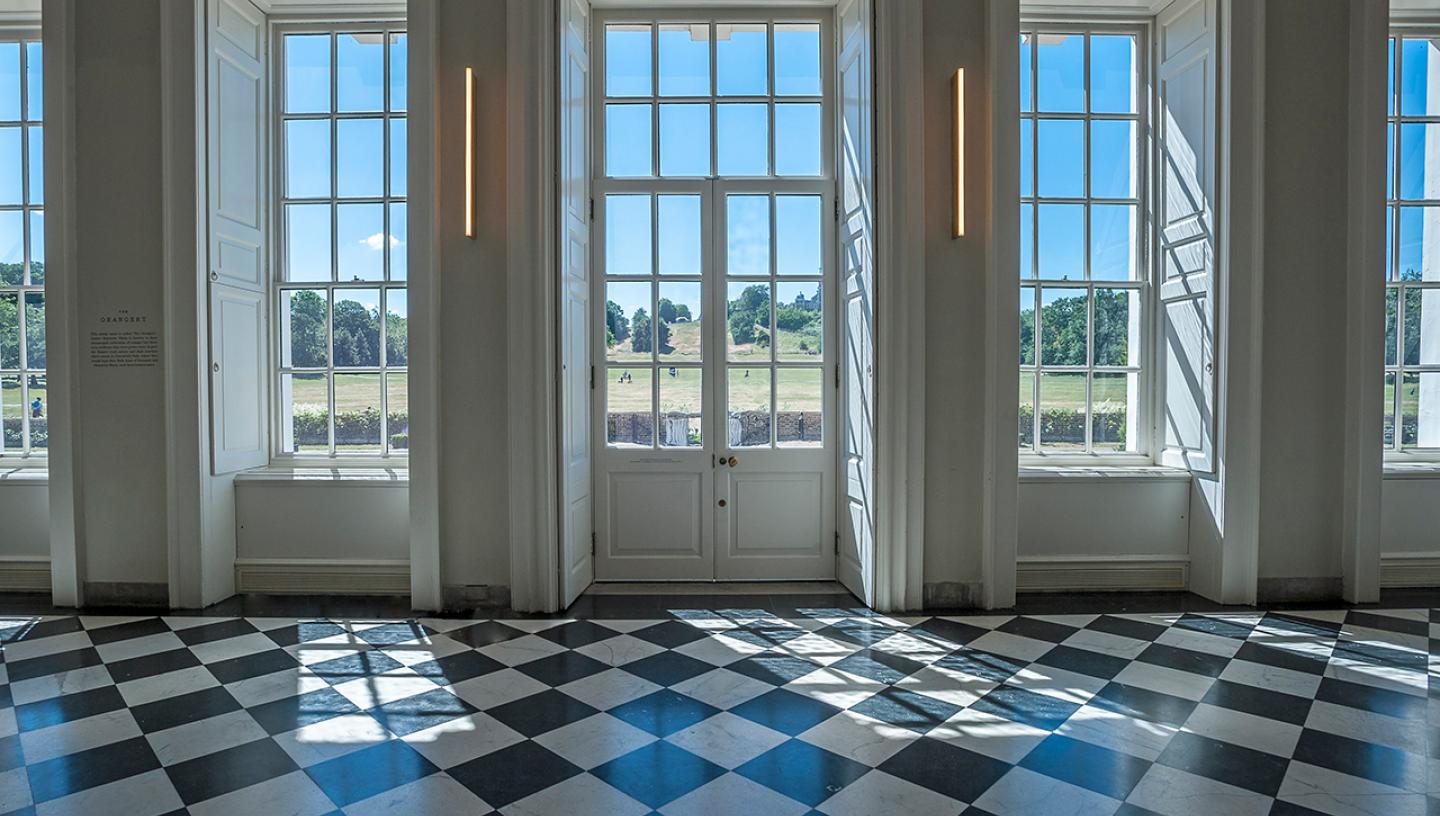
‘Maritime Greenwich’ isn’t a UNESCO World Heritage Site for nothing. Its royal heritage and rich maritime history have resulted in architectural masterpieces by such famous figures as Inigo Jones, Sir Christopher Wren and his pupil Nicholas Hawksmoor.
But it’s not just about classical forms and elegant detail. Greenwich is also something of a hotspot for contemporary architecture. Don’t miss the Stirling Prize-winning Laban Building, the Sammy Ofer wing at the National Maritime Museum and the innovative glass structure supporting the world-famous Cutty Sark ship.
The Queen’s House: Britain's first classical building
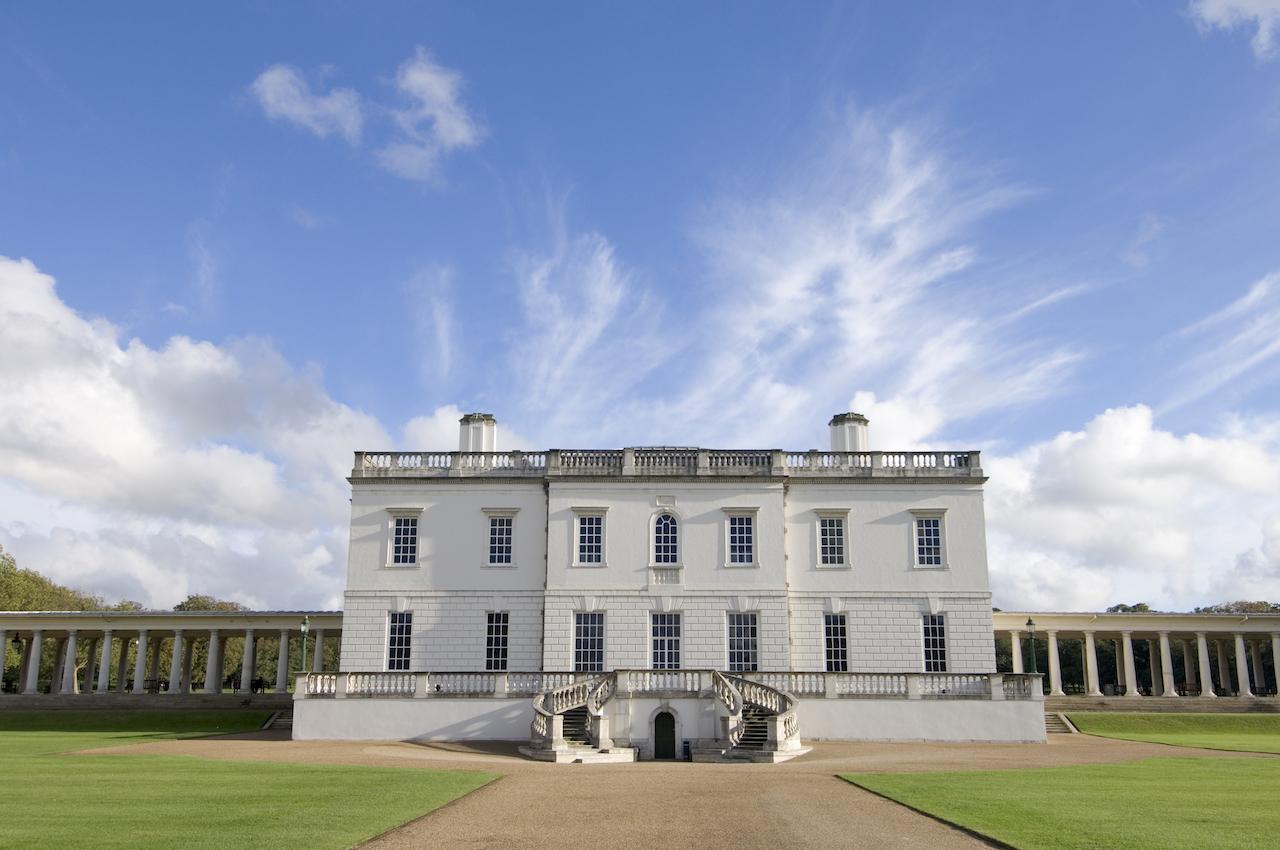
Inigo Jones’ architectural work of art is the earliest surviving neoclassical building in Britain, and the only remaining part of the royal palace complex at Greenwich. Built for Anne of Denmark, wife of James I, between 1616 and 1638, the Queen's House is celebrated for its classical proportions, balustrading and clever use of silhouettes.
Its elegant Great Hall has a black-and-white marbled floor that echoes the ceiling design, while the iconic Tulip Staircase leading off it was England’s first unsupported spiral staircase.
The Old Royal Naval College: a Christopher Wren masterpiece
Fans of neoclassical forms are in for a treat in Greenwich, with not only the Queen’s House but also Sir Christopher Wren's Baroque masterpiece, the Old Royal Naval College. In fact, one of the most striking things about the latter is the way its twin domes frame the Queen’s House as its central axis when viewed from the river.
Built in the early 18th century as a retirement home for Royal Navy sailors, the elegant building is known for its magnificent Painted Hall, with its wonderful ceiling mural, and for its beautiful Chapel. It’s the centrepiece of the ‘Maritime Greenwich’ UNESCO World Heritage Site.
The National Maritime Museum's Sammy Ofer wing
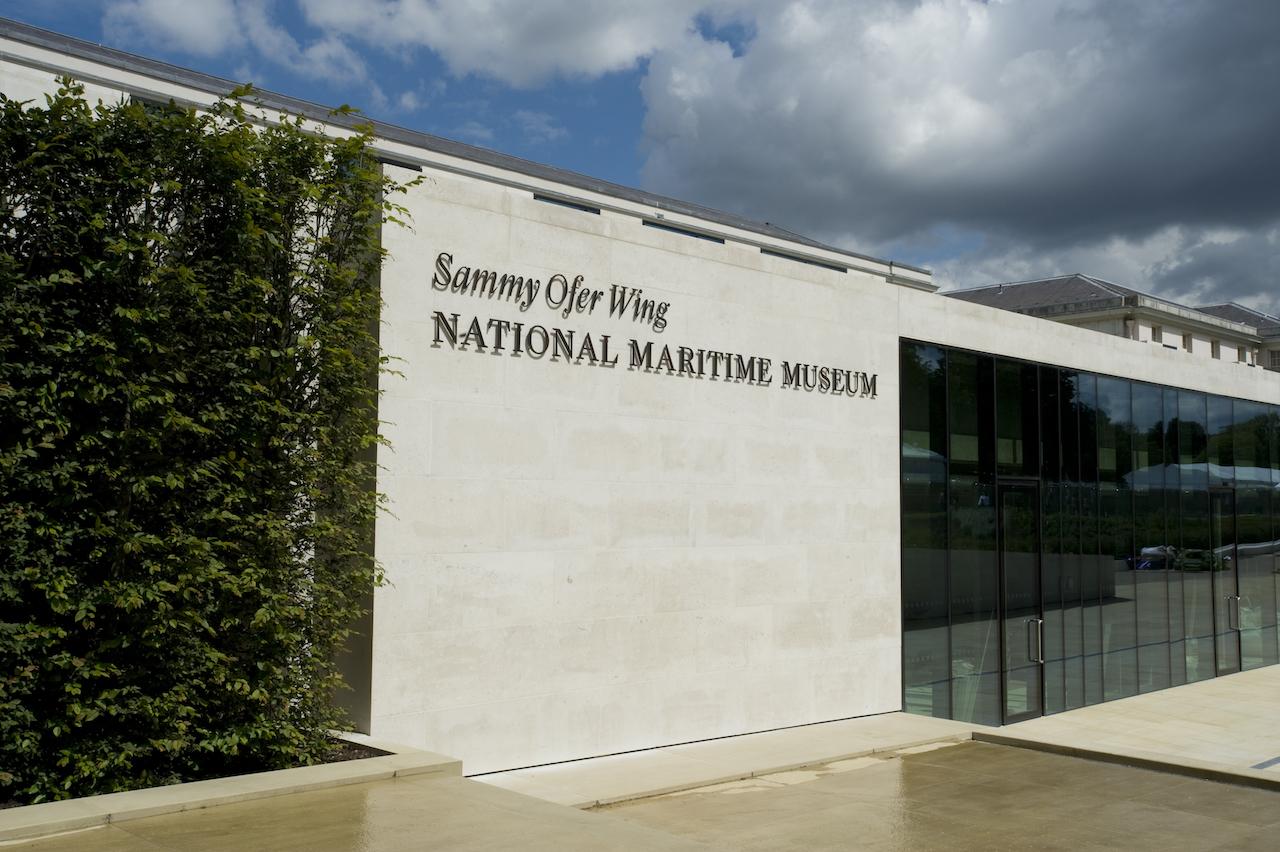
Greenwich also has its fair share of enticing contemporary architecture. One of the borough’s most-celebrated new buildings of recent time is the Sammy Ofer wing of the National Maritime Museum, designed by C.F. Møller Architects. Open since summer 2011, the extension has a contemporary aesthetic that cleverly merges into the original Baroque building. It has provided the museum with a huge new area for temporary shows, and a new entrance and café through Greenwich Park.
Herzog & de Meuron’s prize-winning Laban Building
Herzog & de Meuron’s Laban Building is another notable example of contemporary architecture in the area. Situated beside Deptford Creek, a ten-minute walk from Greenwich town centre, the dance conservatoire design was awarded the prestigious Stirling Prize in 2003.
The architects collaborated with visual artist Michael Craig-Martin for the building’s bold exterior. Its huge windows are clad in semi-transparent polycarbonate panels that incorporate shades of magenta, lime and turquoise, and which reveal silhouettes of rehearsing dancers. At night, the whole building glows.
Flamsteed House: Wren’s ode to architecture and astronomy
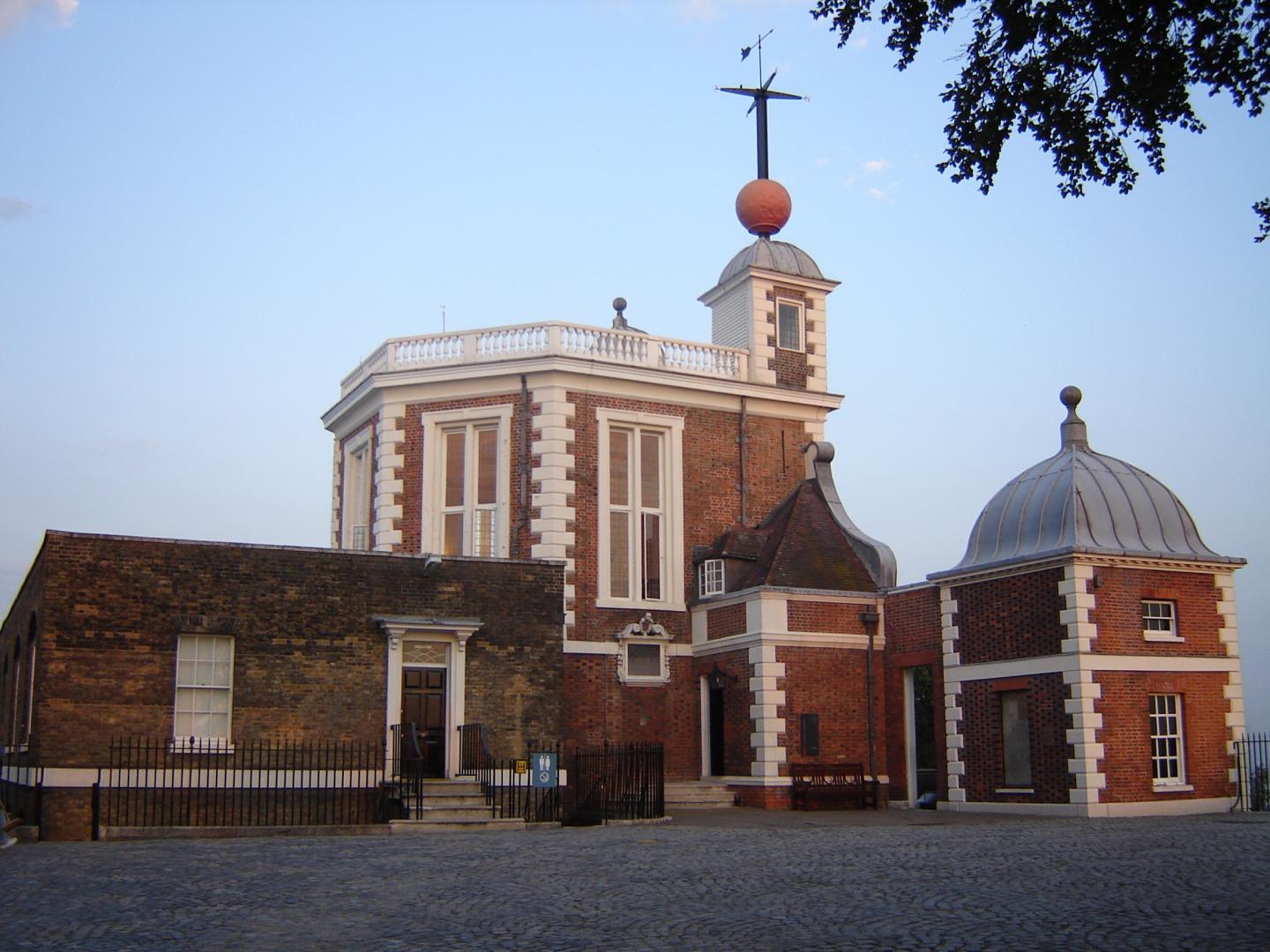
Christopher Wren was a noted astronomer and his two loves were united in his design of the Royal Observatory. He was commissioned to design the building by Charles II in 1675. The idea was to create an observatory for Astronomer Royal John Flamsteed, to help him perfect navigation at sea.
In spite of limited funds, Wren created the lovely Flamsteed House observatory. The building’s Octagon Room is one of the few Wren-designed interiors that you can see in London today. Visit to admire the beautiful wood panelling and the wonderful views of Greenwich Park and the Thames.
Wren went on to design the Old Royal Naval College in Greenwich, one of his architectural masterpieces, along with St. Paul’s Cathedral.
Cutty Sark: the transformation of a historic ship
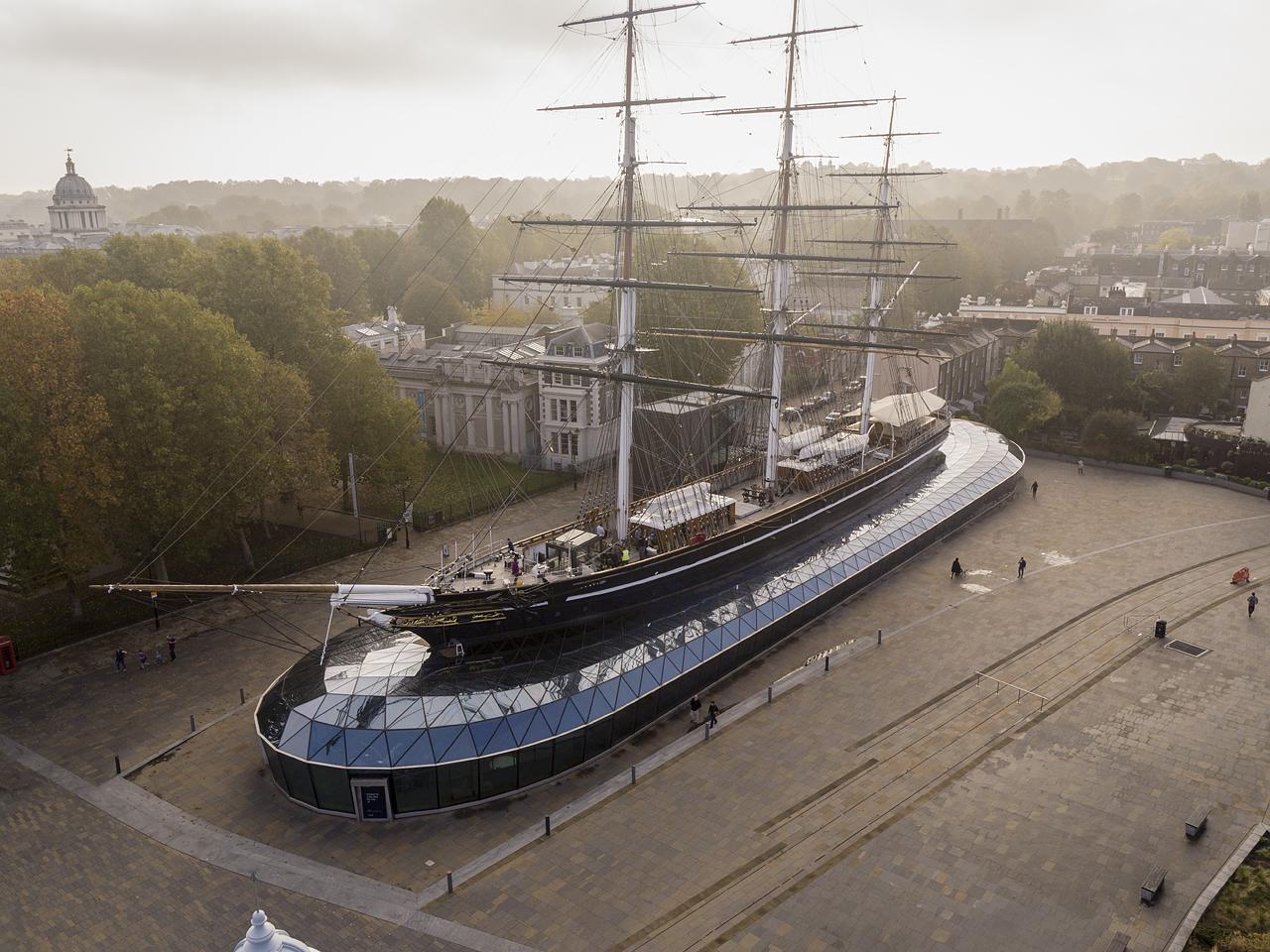
Though not strictly a building, the now-stationary nature of this magnificent 19th-century sailing ship – the world’s only surviving tea clipper – has turned Cutty Sark into an architectural landmark and educational space with an innovative interior.
Grimshaw Architects were behind the Cutty Sark's transformation. As well as much-needed conservation work, a spectacular new interior space has been created by raising the ship’s beautiful copper-clad hull three metres higher than its former position, so that visitors can walk underneath.
The Planetarium: a centre for modern astronomy

The historic Royal Observatory complex also incorporates dynamic modern architecture. The Planetarium building, designed by Allies & Morrison, seamlessly blends clean modern lines into the heritage site through its distinctive tilted bronze cone. Completed in 2007, it’s since become one of the site’s architectural icons. Access to the auditorium – where you can travel through space and time through its mind-blowing shows – is at lower-ground level through a spacious foyer.
Greenwich Market: updated for the 21st century
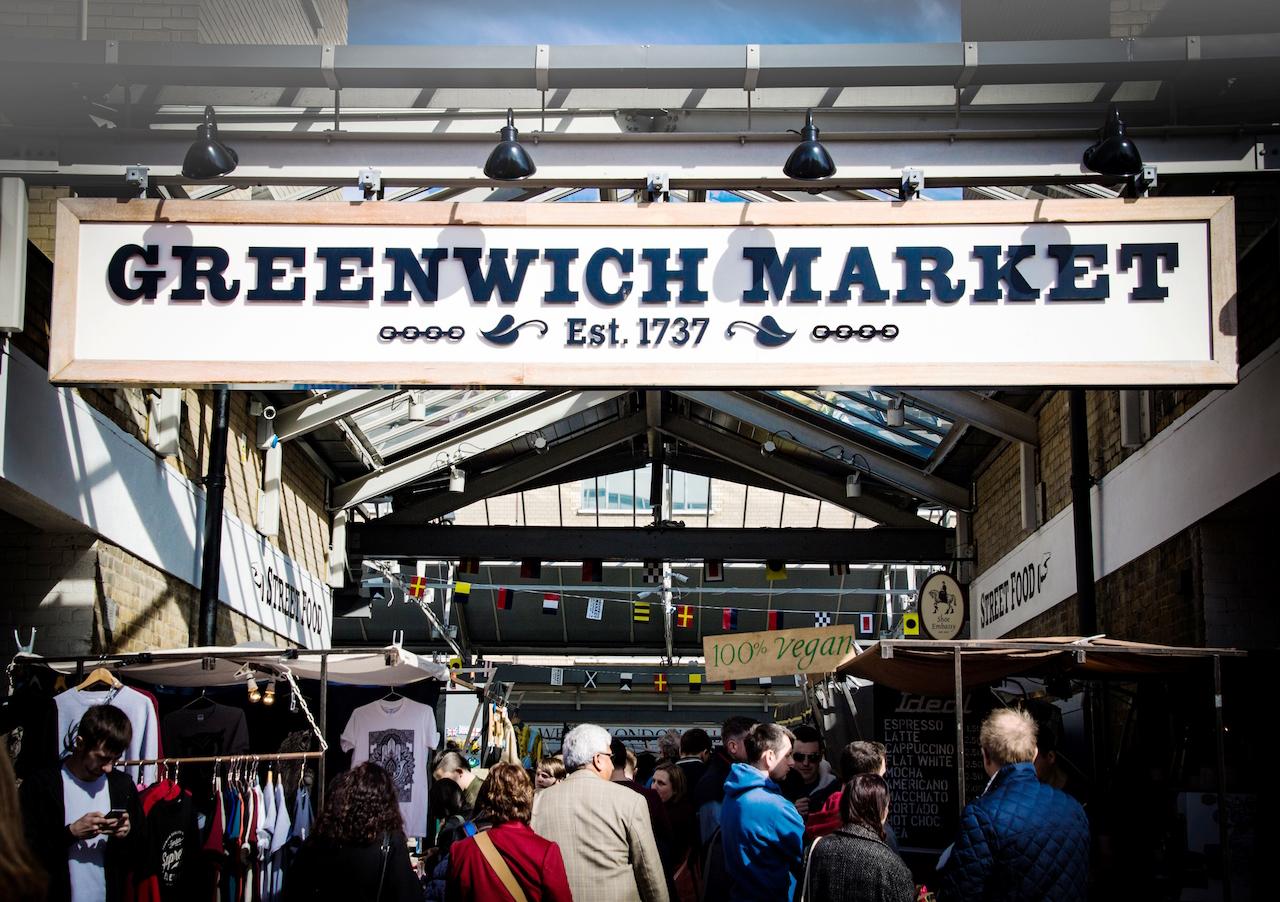
Bustling Greenwich Market is the only London market situated in a World Heritage Site. The daily covered market is well worth a visit, not only for its arts and crafts, vintage clothing, street food and collectibles stalls, but also for its architecture.
The market’s roots go back to the 1800s, but it recently underwent a four-year restoration, reopening in 2016. The refit revealed a new food court, an innovative glass roof, a new lighting scheme and a slick open-air pavilion.
Trinity Hospital almshouses: the borough’s oldest building
Founded by Henry Howard, Earl of Northampton, in 1613, Trinity Hospital is a complex of delicate cream-coloured almshouses that opened to residents in 1617. Though it’s the oldest building in Greenwich, part of it was rebuilt in 1812 in Gothic Revival style. You’ll need to hope that the centre gates are open if you want to see the 17th-century cloister-style courtyard, the building’s highlight. With ancient wisteria growing around the columns and a fountain in the middle, it’s as pretty as a picture. No wonder English Heritage made it Grade II listed.
The O2 Arena: a 21st-century Greenwich landmark
Now a Greenwich landmark, it’s hard to miss the huge dome-shaped structure that houses the O2 Arena. Formerly known as the Millennium Dome, it was designed by Richard Rogers at the end of the 20th century to house an exhibition celebrating the turn of the millennium. The exhibition was dismantled in 2001, and an entertainment complex was constructed in the original dome. It opened in 2007, and now hosts large-scale music and sports events.
St Alfege Church: designed by Nicholas Hawksmoor
St Alfege is a medieval church in Greenwich town centre that was remodelled by Nicholas Hawksmoor – Sir Christopher Wren’s famous student – in the early 18th century. The church was named in memory of Alfege, the Archbishop of Canterbury who was martyred here in 1012. Visit to enjoy its pleasingly harmonious form, achieved in spite of the different hands that have crafted the church. Well-known Greenwich residents to be associated with the church include Henry VIII, composer Thomas Tallis and Major General James Wolfe.
The Optic Cloak: a new Greenwich Peninsula icon
The Greenwich skyline has had an interesting new architectural landmark since 2016: the Optic Cloak, a shiny 49m (160ft) structure by artist Conrad Shawcross that’s visible from land, sea and air. Overlooking the Blackwall Tunnel Approach, it was designed to hide the new Low Carbon Energy Centre that powers thousands of homes.
Made of steel cladding and perforated aluminium panels, the Optic Cloak’s shiny appearance changes according to the light of the day. The structure is also lit up at night, to create a constantly shifting, shimmering tower that cleverly echoes the nearby energy centre.
The London skyline seen from Greenwich Park
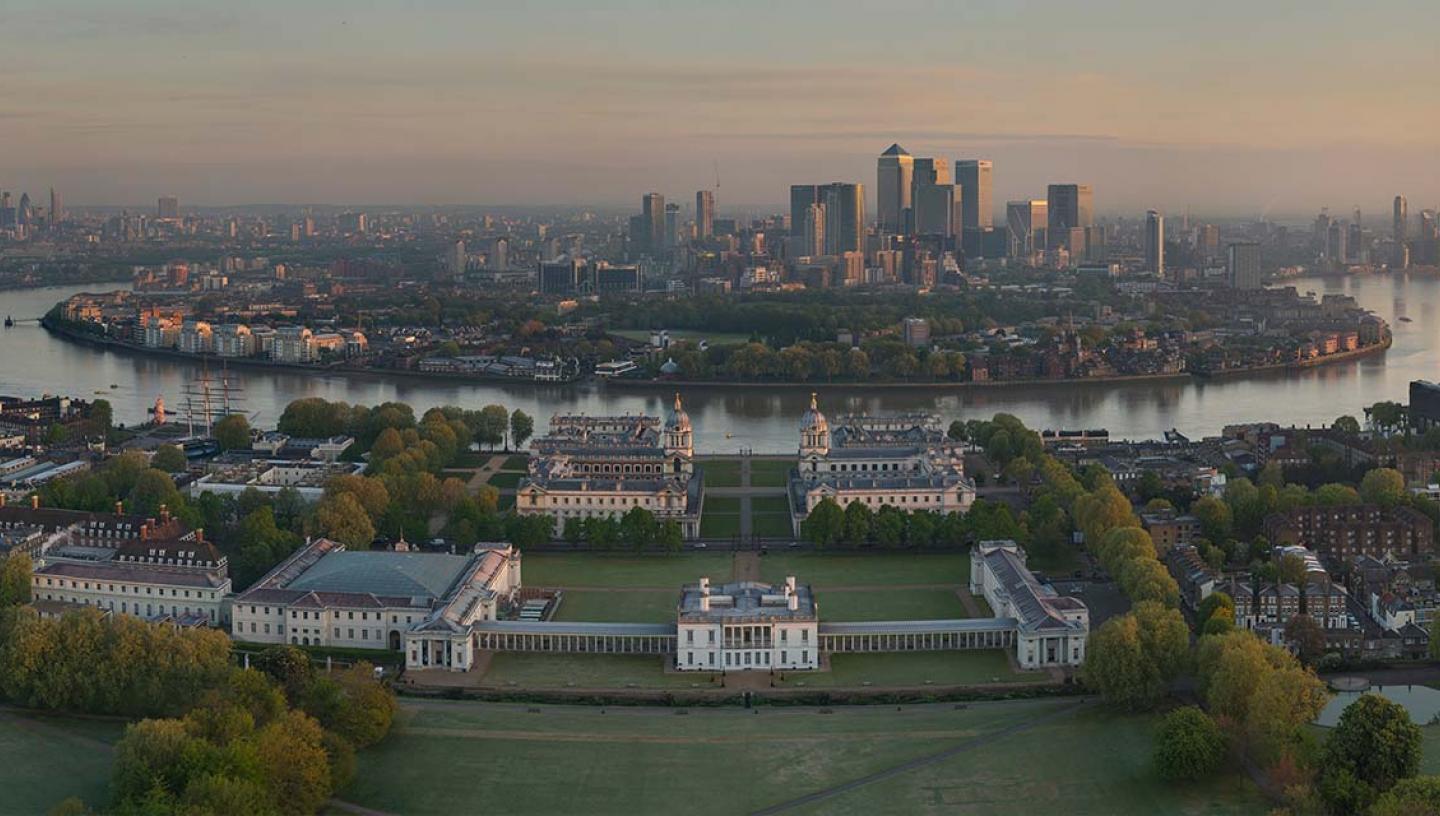
Take the steep walk to the upper reaches of beautiful Greenwich Park and you’ll be rewarded with far-reaching views of London. The spectacular vista takes in the Canary Wharf skyline and the River Thames, with the Queen’s House in the foreground, framed by the classical domes of Wren’s Old Royal Naval College. The cluster of skyscrapers to the right of the Queen’s House includes One Canada Square, known for its pyramid roof.
